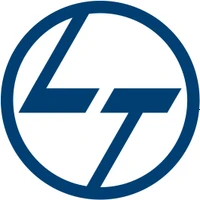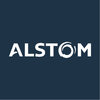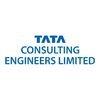
i
Larsen & Toubro
Limited
Proud winner of ABECA 2025 - AmbitionBox Employee Choice Awards
Filter interviews by
Larsen & Toubro Limited Safety Officer Interview Questions and Answers
17 Interview questions
A permit is an official document granting permission to perform specific activities under defined conditions.
Permits ensure compliance with safety regulations and standards.
Examples include work permits for hot work, confined space entry, and electrical work.
They outline the scope of work, safety measures, and responsibilities.
Permits often require signatures from supervisors and safety officers.
Lifting plans can pose hazards like equipment failure, improper techniques, and environmental factors affecting safety.
Equipment failure: Cranes or hoists malfunctioning can lead to dropped loads.
Improper lifting techniques: Workers using incorrect posture can suffer musculoskeletal injuries.
Environmental factors: Slippery surfaces or overhead obstructions can increase accident risks.
Load stability: Unbalanced or ...
Hot work involves processes like welding and cutting, posing risks such as fire, burns, and toxic fumes.
Fire hazards: Sparks from welding can ignite flammable materials nearby.
Burns: Workers can suffer from thermal burns if proper PPE is not used.
Toxic fumes: Welding can produce harmful gases like ozone and carbon monoxide.
Explosions: Hot work near flammable liquids or gases can lead to explosions.
Eye injuries: In...
Confined spaces pose various hazards, including toxic gases, oxygen deficiency, and physical dangers that can lead to serious injuries or fatalities.
Oxygen deficiency: Levels below 19.5% can lead to unconsciousness or death. Example: Work in a poorly ventilated tank.
Toxic gases: Accumulation of harmful gases like carbon monoxide or hydrogen sulfide can occur. Example: Sewage systems.
Physical hazards: Risk of entra...
Safety is the condition of being protected from harm, danger, or injury in various environments and situations.
Safety encompasses physical, emotional, and psychological well-being.
In workplaces, safety protocols prevent accidents, e.g., wearing helmets on construction sites.
In homes, safety measures include smoke detectors and childproofing.
Public safety involves community measures like traffic laws and emergency ...
Housekeeping refers to the organized maintenance of a clean, safe, and efficient work environment.
Regular cleaning of workspaces to prevent accidents and injuries.
Proper storage of tools and materials to avoid clutter, e.g., keeping walkways clear.
Immediate cleanup of spills to prevent slips, e.g., using absorbent materials.
Routine inspections to identify hazards, e.g., checking for frayed electrical cords.
Waste d...
Hazards are potential sources of harm or adverse effects on individuals, property, or the environment.
Physical hazards: Examples include machinery, heights, and slippery surfaces.
Chemical hazards: Substances like acids, solvents, and pesticides can cause harm.
Biological hazards: Bacteria, viruses, and other pathogens that can lead to illness.
Ergonomic hazards: Poor workstation design leading to musculoskeletal dis...
Emergency planning involves preparing for potential emergencies to ensure safety and effective response during crises.
Identify potential emergencies (e.g., fire, natural disasters, chemical spills).
Develop response procedures for each identified emergency.
Conduct regular training and drills to ensure preparedness.
Establish communication plans for informing employees and emergency services.
Review and update the eme...
Risk is the potential for loss, damage, or injury resulting from a hazard or uncertainty in various contexts.
Risk can be quantified as the likelihood of an event occurring multiplied by its potential impact.
Example: In construction, the risk of a fall can be mitigated by using safety harnesses.
Risk assessment involves identifying hazards, analyzing their potential impact, and implementing controls.
Example: In fina...
Fire safety involves practices to prevent, control, and respond to fire hazards in various environments.
Conduct regular fire drills to ensure everyone knows evacuation routes.
Install smoke detectors and fire alarms in key areas, testing them monthly.
Maintain clear access to fire extinguishers and ensure staff are trained to use them.
Create a fire safety plan that includes emergency contacts and procedures.
Regularl...
Larsen & Toubro Limited Safety Officer Interview Experiences
11 interviews found
I appeared for an interview in May 2025, where I was asked the following questions.
- Q1. What are the hazards associated with hot work?
- Ans.
Hot work involves processes like welding and cutting, posing risks such as fire, burns, and toxic fumes.
Fire hazards: Sparks from welding can ignite flammable materials nearby.
Burns: Workers can suffer from thermal burns if proper PPE is not used.
Toxic fumes: Welding can produce harmful gases like ozone and carbon monoxide.
Explosions: Hot work near flammable liquids or gases can lead to explosions.
Eye injuries: Intense...
- Q2. What is a permit?
- Ans.
A permit is an official document granting permission to perform specific activities under defined conditions.
Permits ensure compliance with safety regulations and standards.
Examples include work permits for hot work, confined space entry, and electrical work.
They outline the scope of work, safety measures, and responsibilities.
Permits often require signatures from supervisors and safety officers.
- Q3. What are the hazards associated with a lifting plan?
- Ans.
Lifting plans can pose hazards like equipment failure, improper techniques, and environmental factors affecting safety.
Equipment failure: Cranes or hoists malfunctioning can lead to dropped loads.
Improper lifting techniques: Workers using incorrect posture can suffer musculoskeletal injuries.
Environmental factors: Slippery surfaces or overhead obstructions can increase accident risks.
Load stability: Unbalanced or impro...
- Q4. What are the hazards associated with confined spaces?
- Ans.
Confined spaces pose various hazards, including toxic gases, oxygen deficiency, and physical dangers that can lead to serious injuries or fatalities.
Oxygen deficiency: Levels below 19.5% can lead to unconsciousness or death. Example: Work in a poorly ventilated tank.
Toxic gases: Accumulation of harmful gases like carbon monoxide or hydrogen sulfide can occur. Example: Sewage systems.
Physical hazards: Risk of entrapment...
- Q5. Work at height hazard
- Ans.
Work at height hazards involve risks of falls, leading to serious injuries or fatalities. Proper safety measures are essential.
Use of personal protective equipment (PPE) like harnesses and helmets to prevent injuries.
Implement guardrails and safety nets to catch falling workers or tools.
Conduct regular training sessions on safe work practices at heights.
Example: A worker on a scaffold should always wear a harness attac...
Interview Preparation Tips
I appeared for an interview in Sep 2024, where I was asked the following questions.
- Q1. What is safety
- Q2. What is hazards
- Q3. What is risk
- Q4. What is the emergency planing
- Q5. What is house keeping
Interview Preparation Tips
(1 Question)
- Q1. Environment health safety
I applied via Naukri.com and was interviewed in Jul 2023. There were 2 interview rounds.

(2 Questions)
- Q1. What is safety,what is safety officer job responsbility,what is confine space,what is work at hight.
- Ans.
Safety officers ensure workplace safety by identifying and mitigating hazards, including those related to confined spaces and working at heights.
Safety is the condition of being protected from harm or danger.
Safety officers are responsible for implementing safety protocols, conducting safety inspections, and providing safety training to employees.
Confined spaces are areas with limited entry and exit points, posing risk...
- Q2. What is trench,what is H2s gas,what is flash back arester,
- Ans.
Trench is a narrow excavation in the ground, H2S gas is a toxic gas, and a flashback arrester is a safety device to prevent flames from traveling back into a gas line.
Trench is a long, narrow excavation typically used for pipelines or utilities.
H2S gas is hydrogen sulfide, a colorless, toxic gas with a foul odor.
Flashback arrester is a safety device used in welding or cutting to prevent flames from reaching the gas sou...
Interview Preparation Tips
I appeared for an interview before Feb 2024.
(4 Questions)
- Q1. Plz ask me safety regarding questions
- Ans.
Safety refers to the protection of people, property, and the environment from harm, injury, or damage. It involves taking measures to prevent, mitigate, or respond to hazards, risks, and emergencies.
- Q2. Plz ask me construction safety regarding questions
- Ans.
safety involves: 1. Identifying and assessing potential hazards on site, such as falls, electrical hazards, and equipment malfunctions. 2. Implementing measures to mitigate or eliminate these hazards, such as using personal protective equipment (PPE), installing safety nets, and providing training on safe work
- Q3. Fire safety related question
- Ans.
Fire safety refers to the practices, procedures, and measures put in place to prevent, detect, and respond to fires, in order to protect people, property, and the environment from harm.
- Q4. Lifting work safety
(2 Questions)
- Q1. Plz fire safety related question
- Q2. Plz safety regarding questions
Interview Preparation Tips

It was quite average,indiabixx is enough
(2 Questions)
- Q1. Basic safety questions
- Q2. What is safety how will you deal with workers
- Ans.
Safety is the state of being protected from harm or danger. As a safety officer, I will ensure workers follow safety protocols.
Safety is a priority in any workplace to prevent accidents and injuries.
I will conduct regular safety inspections and audits to identify potential hazards.
I will provide safety training to workers to ensure they understand the importance of safety protocols.
I will enforce safety rules and regul...
Interview Preparation Tips
I applied via LinkedIn and was interviewed before Feb 2023. There was 1 interview round.
(3 Questions)
- Q1. What is tandem lifting
- Ans. When we use 2 crane for same material lifting at one time.
- Q2. Diameter of tunnel where you work.
- Ans.
The diameter of the tunnel where I work is 6 meters.
The tunnel has a diameter of 6 meters.
The size of the tunnel allows for safe passage of vehicles and equipment.
The diameter is measured from one end of the tunnel to the opposite end, passing through the center.
The tunnel's diameter is important for determining clearance and ensuring safe operations.
- Q3. How many types of gas monitoring in tunnel.
- Ans.
There are several types of gas monitoring in tunnels, including continuous monitoring, spot monitoring, and remote monitoring.
Continuous monitoring involves the use of sensors placed throughout the tunnel to constantly measure gas levels.
Spot monitoring involves periodic checks at specific locations in the tunnel to assess gas levels.
Remote monitoring allows for real-time monitoring of gas levels from a control room or...
I applied via LinkedIn and was interviewed before Jun 2022. There were 3 interview rounds.

(1 Question)
- Q1. What is your contribution to the company on your role?
(1 Question)
- Q1. Case Study and discussion on same

FIRE and industrial safety
(1 Question)
- Q1. Realted fire and industrial safety
Interview Preparation Tips
Interview Questionnaire
2 Questions
- Q1. About work experience. i.e HIRA,SOP,
- Q2. Basis knowledge.
Top trending discussions






Larsen & Toubro Limited Interview FAQs
Tell us how to improve this page.
Larsen & Toubro Limited Interviews By Designations
- Larsen & Toubro Limited Graduate Engineer Trainee (Get) Interview Questions
- Larsen & Toubro Limited Assistant Manager Interview Questions
- Larsen & Toubro Limited Civil Site Engineer Interview Questions
- Larsen & Toubro Limited Senior Engineer Interview Questions
- Larsen & Toubro Limited Site Engineer Interview Questions
- Larsen & Toubro Limited Civil Engineer Interview Questions
- Larsen & Toubro Limited Electrical Engineer Interview Questions
- Larsen & Toubro Limited Assistant Construction Manager Interview Questions
- Show more
Interview Questions for Popular Designations
Overall Interview Experience Rating
based on 12 interview experiences
Difficulty level
Duration
Interview Questions from Similar Companies
Larsen & Toubro Limited Safety Officer Reviews and Ratings
based on 184 reviews
Rating in categories
|
Assistant Manager
3.9k
salaries
| ₹9.5 L/yr - ₹17 L/yr |
|
Senior Engineer
3.6k
salaries
| ₹5.9 L/yr - ₹12 L/yr |
|
Engineer
1.5k
salaries
| ₹3.9 L/yr - ₹9.2 L/yr |
|
Manager
1.3k
salaries
| ₹14.7 L/yr - ₹25 L/yr |
|
Assistant Construction Manager
1.2k
salaries
| ₹9.1 L/yr - ₹16 L/yr |

AECOM

Megha Engineering & Infrastructures

Alstom Transportation

Burns & McDonnell
- Home >
- Interviews >
- Larsen & Toubro Limited Interview Questions


















